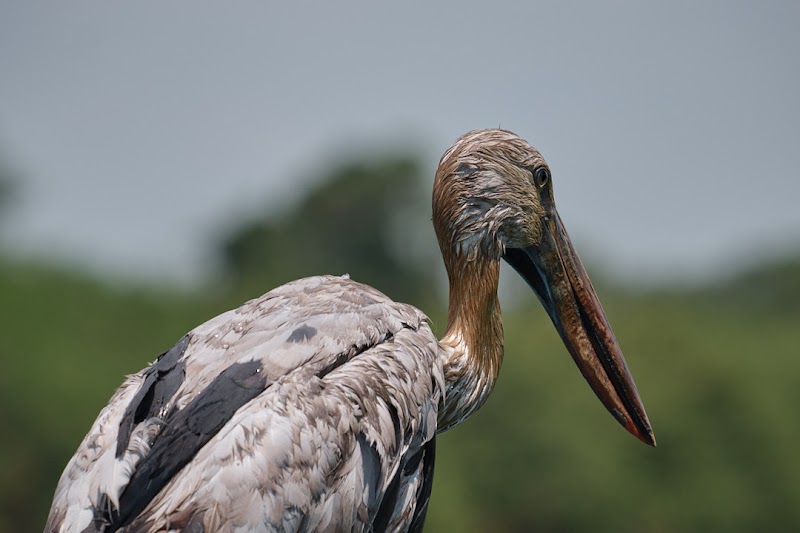Experience Angkor Wat at its most magical: sunrise. This ancient temple complex holds a quiet power at dawn, where light and history meet in perfect harmony. Discover practical tips for timing, gear, and navigation to make your visit unforgettable.
Arrive Early to Secure a Prime Spot
Get to Angkor Wat at least 30 minutes before sunrise to avoid crowds and choose your ideal viewing location near the west reflecting pool.
Wear Good Grip Footwear
The causeway and temple stones can be slippery, especially with early morning dew. Hiking shoes or sturdy sneakers are recommended.
Bring Hydration and Mosquito Protection
Humidity is high before dawn and mosquitoes are active. Carry water and insect repellent to stay comfortable during your visit.
Hire a Local Guide
A guide enriches your experience, providing cultural context and navigating lesser-known parts of the vast temple grounds.
Awakening the Ancient: Exploring Angkor Wat at Sunrise
The journey to Angkor Wat’s sunrise begins in the quiet darkness before dawn, when the temple complex is still cloaked in a soft, expectant hush. Arriving early is key: this ancient monument, sprawling over some 162 hectares, draws crowds by mid-morning, but at sunrise, you engage directly with a world fiercely itself — the crumbling stones warmed by the first light, the air thick with anticipation.
Approach Angkor Wat through the west causeway, a walk of roughly 1.2 kilometers from the entrance gates, where the uneven sandstone slabs feel the weight of centuries under your shoes. The terrain is flat with minimal elevation gain, making it accessible for most visitors, yet the vastness of the space commands respect. Expect a mixture of smooth worn stone and patches where tree roots, like slow-moving rivers, push through, daring your footing to stay steady.
As the horizon begins to blush, the sun teases out the temple’s iconic lotus towers, each silhouette standing as a testament to the Khmer Empire’s engineering prowess. The moat mirrors this awakening with glassy calm, ripples stirred by early birds darting across the surface. Nearby, ancient trees crowd the grounds like watchful sentinels, their branches gesturing silently toward secrets etched in the bas-reliefs.
Timing is vital. Arriving between 5:00 and 5:30 AM lets you claim a vantage spot near the western reflecting pool — a favorite for photographers hoping to catch those perfect mirrored cathedral shots before the crowds flood in. Wear sturdy shoes; the causeway can be slippery with morning dew. Bring water to stay hydrated in the humid air, and a lightweight long-sleeve shirt to guard against mosquitoes stirred awake at dawn.
Keep your pace deliberate. The temple is less a place to conquer and more a landscape to understand. Walk slowly through the central galleries to appreciate the detailed carvings — scenes of ancient battles, celestial dancers, and mythical creatures. The sun, rising steadily, casts shifting shadows that bring these stories to life.
Respect the site: Angkor Wat remains an active place of worship, so maintain a quiet reverence amidst your exploration. Post-sunrise offers a change in atmosphere, as vendors and tour groups begin to fill the spaces. If seeking solitude, consider moving toward the less crowded outer galleries or the nearby small temples like Pre Rup, which offer panoramic views over Angkor Wat in the growing light.
For practical planning, tickets are available for single-day or multi-day passes, purchasable outside the main entrance. To maximize your experience, consider hiring a knowledgeable local guide who can navigate not just the physical layout but the rich historical and spiritual context.
In sum, exploring Angkor Wat at sunrise invites you into a dialogue with an ancient world that’s alive with stories and beauty. It’s more than sightseeing: it’s waking up with history, feeling the pulse of stone and sky as light and shadow engage in their daily dance.
Nearby Trips
All Adventures
Boat Charters
Water Activities
Adventures near Siem Reap
Discover the unique and memorable adventures that make Siem Reap special.
Frequently Asked Questions
What time should I arrive to see the sunrise at Angkor Wat?
Arriving between 5:00 and 5:30 AM is recommended to find a good viewing spot and experience the temple before the crowds arrive.
Is it safe to walk around Angkor Wat at sunrise?
Yes, the pathways are generally safe, but early morning dew can make stones slippery. Sturdy footwear is highly advised.
Do I need a guide to visit Angkor Wat at sunrise?
While not mandatory, a local guide enhances the experience by explaining historical and cultural details and navigating quieter areas.
Can I take photos inside Angkor Wat during sunrise?
Photography is allowed in most areas, but tripods may be restricted during busy times. Early hours provide the best light and fewer people.
What kind of ticket do I need for sunrise visits?
You will need a valid Angkor Pass, purchasable for 1, 3, or 7 days at the official ticket counters near the site entrance.
Are there any restrictions for visitors at sunrise?
Visitors should respect the temple as an active religious site, keep noise levels down, and avoid climbing on sacred structures.
Recommended Gear
Sturdy Walking Shoes
Essential for safely navigating uneven, sometimes slippery stone and causeway surfaces.
Insect Repellent
Vital for warding off mosquitoes, especially before sunrise and in humid seasons.
Water Bottle
Staying hydrated is crucial, particularly in Cambodia’s warm tropical climate.
Lightweight Long-Sleeve Shirt
Protects against sunburn and insect bites while remaining breathable in humid conditions.
Local Insights
Hidden Gems
- "The quieter East Library near the main temple offers peaceful reflection spots away from crowds."
- "The stone causeways edged by naga balustrades reveal intricate sculptural details often missed."
Wildlife
- "Monitor lizards often sunbathe near the outer walls, blending with the temple’s ancient stones."
- "Early birds such as kingfishers dart across the moat waters, adding life to the calm morning scene."
History
"Angkor Wat was built in the 12th century as a Hindu temple dedicated to Vishnu before becoming a Buddhist site, its architecture reflecting classical Khmer style and serving as Cambodia’s spiritual heart."

